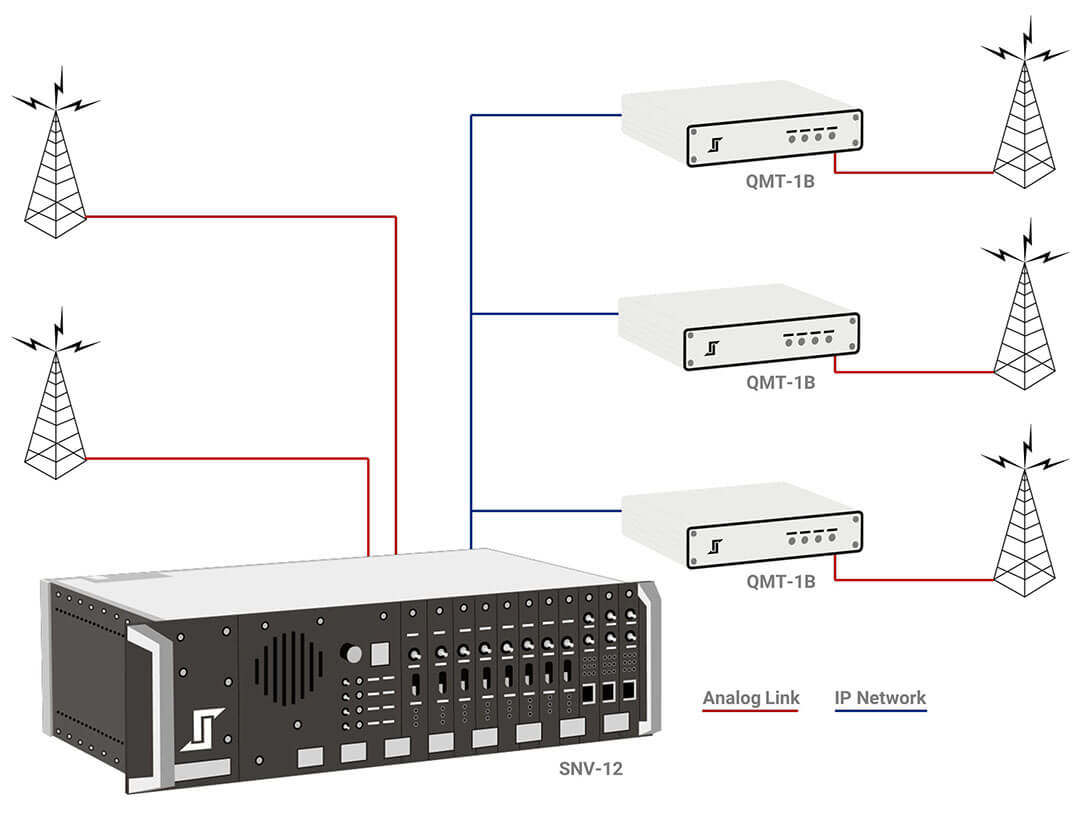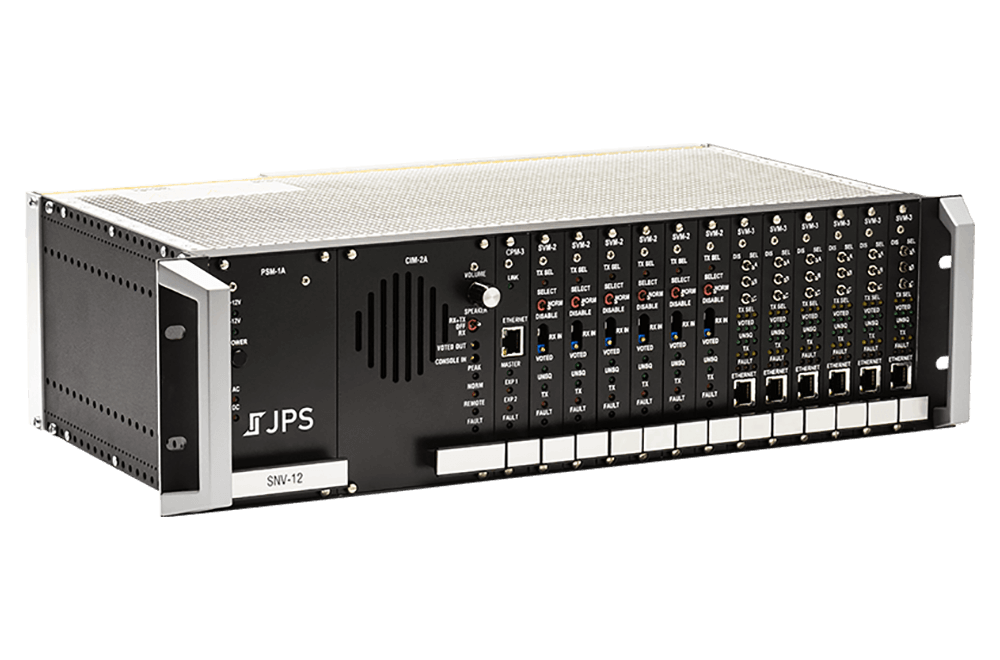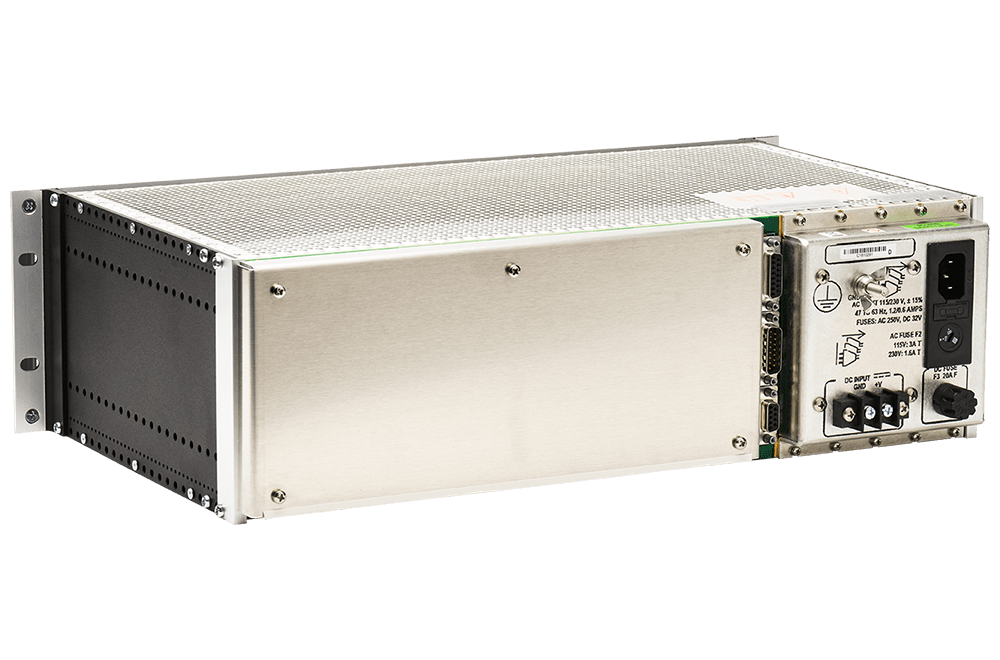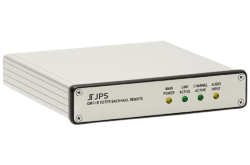SIGNAL-AND-NOISE
VOTER COMPARATOR
The SNV-12™ Signal-and-Noise Voter Comparator uses Digital Signal Processing to continuously monitor multiple remote receiver sites and select the receiver with the best signal quality.
The new SVM-3 module, along with a QMT-1B™ remote (for Quality Measurement & Transport) allows the use of IP networks for transport of receive and transmit audio. The SVM-3 modules can coexist along with SVM-2 modules in an SNV-12 chassis with a CPM-3 and appropriate firmware. The SVM-3 allows front panel force vote and force disable, just like the SVM-2.
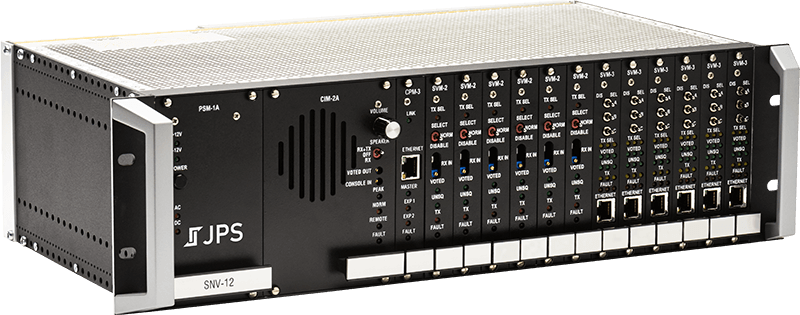

Superior Audio Quality

Cost Effective

Highly Flexible
Analog and IP Backhaul in the Same Chassis
The SNV-12 Signal-and-Noise Voter accesses and analyzes backhaul audio from receiver/transceiver sites that use traditional analog backhaul such as leased lines, and also from receiver/transceiver sites that use IP backhaul methods such as a private network or IP microwave. The 64Kbps vocoder for IP backhaul ensures the delivery of clear, high-quality audio.
The SNV-12 votes the highest quality audio by analyzing the audio signals, regardless of backhaul method. In order to do this, when IP backhaul is used, the QMT-1B remote is co-located with the radio at the receiver/transceiver site. The QMT-1B provides timing information, digitizes the audio, and sends it to the SVM-3 module channel it is associated with on the SNV-12.
The Industry Leader
The industry-leading SNV-12 Signal-and-Noise Voter Comparator modular receiver voting system uses individual Digital Signal Processing to measure receiver audio quality for fast and accurate determination of the best sounding audio.
SVM-3 modules, along with the QMT-1B remote at the receiver sites, allow transport of receiver audio via the customer’s IP network, reliably handling the challenges that network delays and jitter add to the voting process.
SVM-3 modules can be plugged into an existing SNV-12 chassis alongside current SVM-2 modules for flexible, low-cost upgrades.
Greater Talk Back Range
A typical SNV-12 Signal-and-Noise Voter application is an LMR system in which mobiles and portables can hear a repeater, but the repeater can’t hear them, due to their lower transmit power and/or the antenna size or placement.
Remote receivers can be positioned in the communications dead spots, with audio from each receiver linked to the voter via IP or T1 microwave, IP fiber, landline, twisted pair, RF link, or fiber optics. The voter will select the best quality signal from all unsquelched remote receivers and forward this signal to the repeater for rebroadcast or monitor by a dispatcher, thus providing greater talk back range for the radios.
Downloads
IP-Capable or Mixed Backhaul (standard)
CPM-3: 3.03
SVM-3: 1.09
QMT-1B: 1.05
Analog-Only Backhaul
CPM-3: 1.11
Technical Support
JPS offers 24/7 technical support via email and phone. For more information, visit our Support Page or visit our interactive Help Center.
FCC Certification
The SNV-12 is FCC Part 15 Certified to prevent unintended electromagnetic interference.
Warranty
All JPS products are covered by a standard 18 month warranty. For more detailed information, review our Warranty Terms.
+11 to +15 VDC @5A nominal
Want to learn more?
Work with our experts to build the right solution for your needs.



 LATAM / Español
LATAM / Español Brazil / Português
Brazil / Português